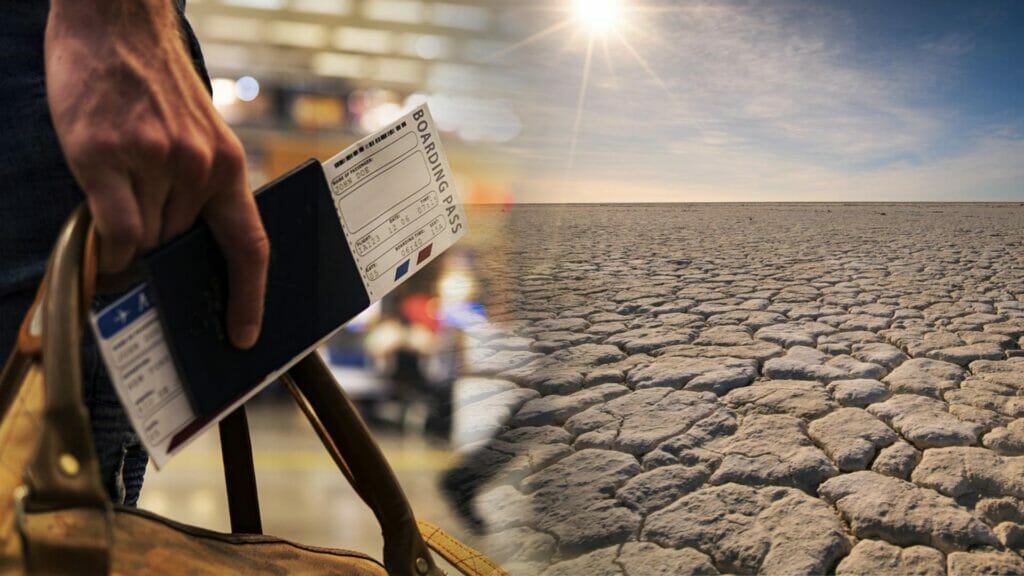President Tokayev warns about risk of droughts in Central Asia

President Kassym-Jomart Tokayev of Kazakhstan has warned of a water crisis in Central Asia. As he noted, the drought can cause damage of 1.3% of the annual GDP by 2050.
What happened? On September 15, during a meeting of the Council of Heads of State – Founders of the International Fund for Saving the Aral Sea, President Tokayev said that the security of Central Asia is threatened by global climate change, low waters and a deficit of irrigation water.
What is the temperature in the region on average?
«According to international experts, temperatures in our region are rising much faster than the global average. As a result, glaciers, which are the key source of water in the basin of the Aral Sea, have been melting. Their volume has decreased by 30% over the past 50 years.
Analysts believe that by 2050, droughts in Central Asia could cause damage of 1.3% of the annual GDP, which in turn will lead to the emergence of about five million internal climate migrants,» Tokayev stated.
What kind of water-related problems is Kazakhstan facing?
According to the president, Kazakhstan also faces problems related to inefficient use of water and ignoring of environmental consequences.
«The two main rivers of our region, the Syr Darya River and the Amu Darya River, are overregulated. There are more than 80 reservoirs in the river basins with a total volume of almost 65 cubic kilometers,» Tokayev highlighted.
Due to the irrational use of water in Kazakhstan, the government expects that this will cause an increase in anthropogenic footprint and worsen social and environmental problems. In turn, all of this creates serious additional risks for regional security, the president said.
«The Kazakh proverb says that water is the source of well-being. I believe that all Central Asian states should keep in mind that water is a limited natural resource, which is a basic necessity for the well-being and sustainable development of the entire region,» he concluded.
According to a forecast prepared by the Ministry of Ecology, the lack of water within the country will be gradually increasing until 2029.
«The forecast for water balance for the period up to 2029 shows that internal river resources will decline from 102.30 to 99.40 cubic kilometers due to less inflow from neighboring countries (a decline from 51.50 to 46.50 cubic kilometers),» the agency said.
The sole source of additional water resources in the region is glaciers that have been melting for a long time. As long as glaciers are getting smaller in size, the flow of water in rivers will also decrease.
What has happened in the Jambyl region of Kazakhstan?
The government has declared a state of emergency in six districts of the Jambyl region due to severe shortages of irrigation water. Many local farmers have already lost their harvest, with an estimated damage of $7.5 million.
Southern regions of Kazakhstan are almost entirely dependent on water from Kyrgyzstan. In the Jambyl region, up to 80% of irrigation water comes from the neighboring country. At the same time, Kyrgyzstan also reported shortages of irrigation water.
In June, Speaker of the Senate Maulen Ashimbaev said that the depletion of water resources is one of the main problems in the country. The government estimates that water consumption will increase 1.5 times in the next 20 years due to the growth of the economy and population.
Ashimbaev also noted that the volume of water entering Kazakhstan has been constantly decreasing for years, while the agricultural sector consumes about 50% of water.
In early June, Tokayev said that the average temperature in Central Asia would rise by two degrees Celsius and cause a shortage of drinking water and further desertification of land across the region.
According to the president of Kazakhstan, the volume of water in Syr Darya and Amu Darya will decrease by 15% over the next 30 years.

